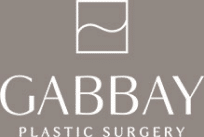Eyelid Surgery
Choose Blepharoplasty To Help You Look More Alert & Youthful
Table of Contents
About Eyelid Surgery
We offer a full range of surgical and non-surgical cosmetic procedures that can dramatically improve the appearance of your eyes. The blepharoplasty operation can be performed on both your upper and lower eyelids (separately, or at the same time). Aesthetics are not the only reason for having eyelid surgery; extra skin hanging over your eyes can sometimes impair your vision.
- Excess fatty deposits giving the upper eyelids a puffy appearance.
- Loose or sagging skin creating folds or disturbing the natural contour of the upper eyelid (which can sometimes impair a patient’s vision).
- The removal of excess skin and fine wrinkles from the lower eyelid.
- Bags under the eyes.
- Droopiness of the upper or lower eyelids, showing white below the iris.
- Upper Blepharoplasty: This minimally invasive procedure is performed to enhance the cosmetic appearance of the upper eyelid region and/or to correct a peripheral vision obstruction caused by excess upper eyelid skin. During this procedure, Dr. Gabbay will make a small incision along the outside of your upper eyelid, and will then remove any excess skin, muscle folds, or fatty deposits. Scarring after this surgery is very minor and will be inconspicuously hidden in the crease of your eyelid.
- Lower Blepharoplasty: This procedure is performed to correct aesthetic problems of the lower eyelid, such as excess skin, dark circles or a “puffy” appearance. Fluid accumulation and/or excess fatty deposits cause the “puffy” appearance of the lower eyelids, and dark circles under the eyes can be caused by dyscrhromias (discolorations) or pigmentations, fatty deposit shadows, or the protrusion of the orbital bone surrounding the eyes. Dr. Gabbay will employ different lower blepharoplasty techniques depending upon the problems that need to be addressed, and their respective causes.
It takes approximately 7-10 days for the main swelling and bruising to subside after eyelid surgery. Dissolvable stitches will dissolve on their own, while permanent stitches will be removed in 4-7 days. For the first few weeks, you may experience dry or watery eyes, blurring or double vision, and sensitivity to light but these symptoms will gradually subside. Normal activity may be resumed in 3-4 days, although you should avoid strenuous physical activity for 2-3 weeks after your surgery. If you would like more information about eyelid surgery, please contact us and we will be happy to answer any and all of your questions, and to schedule an initial, complimentary consultation with Dr. Gabbay. You may also click the link below to read a more in-depth description of the blepharoplasty procedure.
for a consultation!
Anatomy of the Eyelid
- Levator Oculi Superioris: this thin muscle is responsible for lifting the eyelid
- Muller’s muscle: this superior tarsal muscle also lifts the eyelid, but is controlled by the involuntary sympathetic nervous system
- Orbicularis Oculi: this muscle closes the eyelids when we go to sleep or blink
Is Blepharoplasty the Right Choice for Your Needs?
Whether you are considering blepharoplasty surgery for functional or cosmetic reasons, your choice of a qualified facial surgeon is crucial. You can expect a comprehensive initial consultation and an open and honest exchange with Dr. Gabbay, which will establish the basis for a successful surgical outcome. During your consultation, Dr. Gabbay will evaluate your eyelid anatomy and will determine the appropriate technique to utilize for your blepharoplasty procedure.
Complementary Procedures
- Brow lift
- Mid-facelift
- Facelift
- Dermal fillers
- Laser resurfacing
- Neurotoxin
for a consultation!

Gallery
Specifics About the Procedure
Recovering from Eyelid Surgery
Call us today at (310) 205-9500 to schedule your initial consultation. We are proud to help our patients feel rejuvenated and confident at every stage of their lives!



